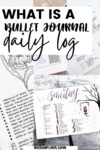What Is A Bullet Journal Daily Log
In this blog post, we’ll be talking about one of the basic Bullet Journal page ideas – a Bullet Journal daily log, which is one of the most important building blocks of the system.
This spread combines organization with mindfulness, making it an ideal way for busy individuals who are looking for peace and productivity.
Read on as we discuss what exactly a Bullet Journal saily spread is and how it can be used as part of your overall well-being plan!
Since it’s one of the basic pages, this post is actually a part of my Bullet Journaling for beginners series.
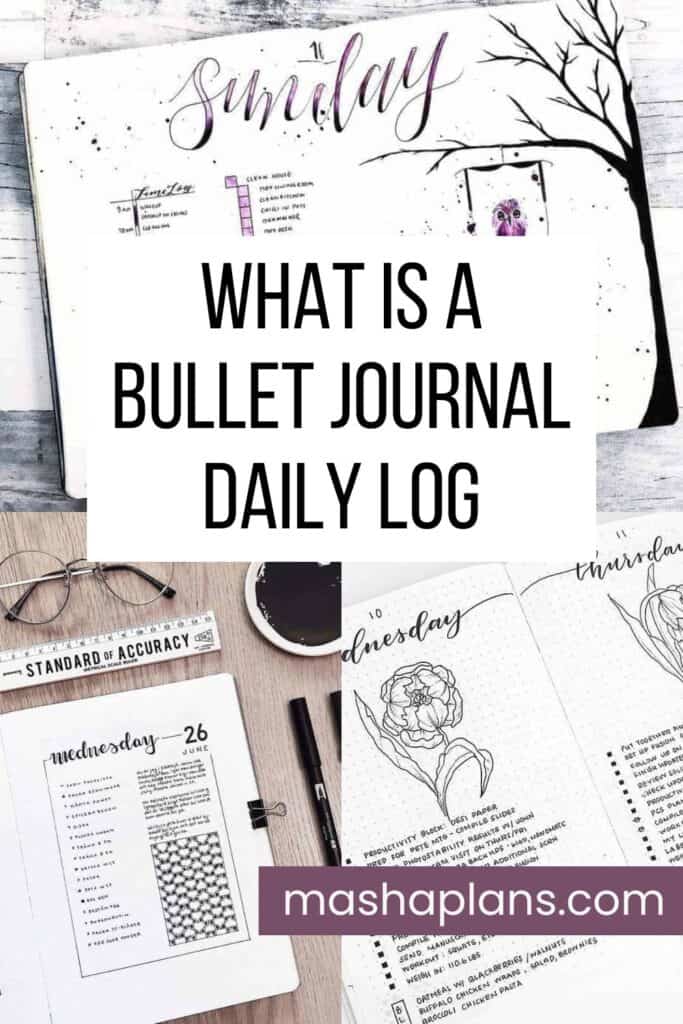
Daily logs are not necessarily what I often use in my Bullet Journal, but they have benefits.
And I believe you should try many different things with this planning method before figuring out what works best for you. And I must say that sometimes my planning needs to change, and I use a daily log myself.
So today, let’s look into what a daily log is, what to write in it, and how to set one up.
And be sure to scroll until the end to get some free printables and more resources.
What Is A Daily Log
Bullet Journal daily log is the smallest block for planning – it’s basically a place to plan your days.
This is a spread where you organize your daily tasks, appointment, and chores.
It’s a great way to stay organized and ensure you always finish the things you must do.
More than that, your daily log can help you stay on track with your habits, self-care, and pretty much anything else you need.
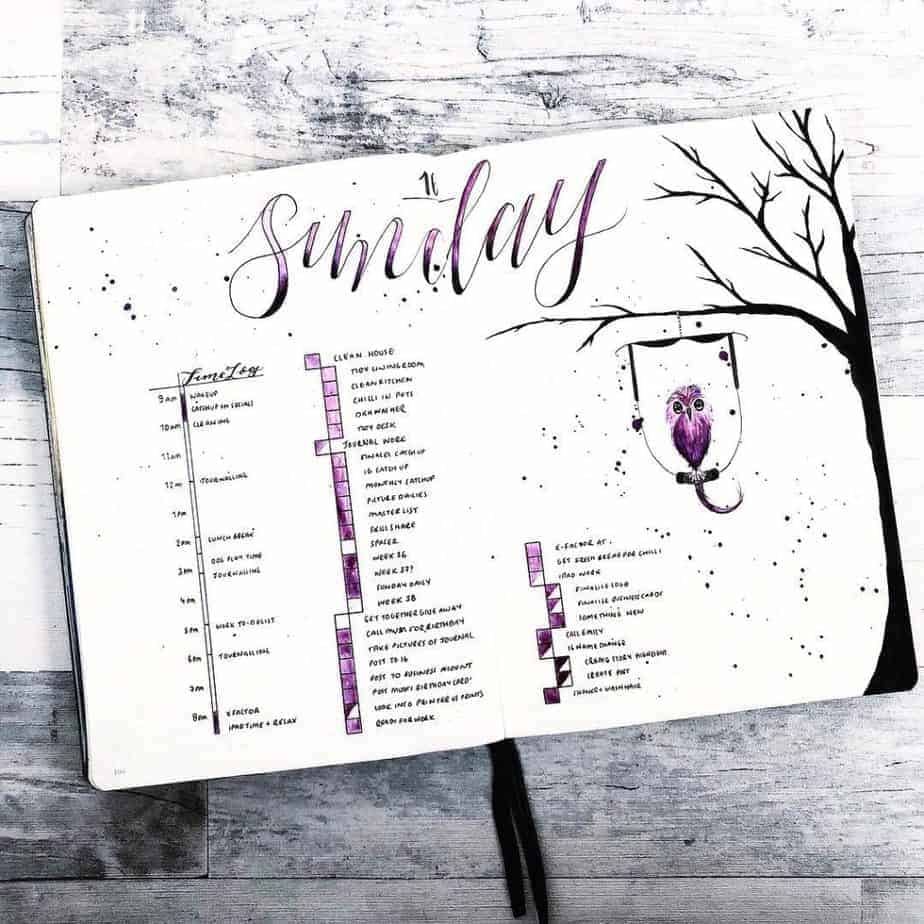
Let’s look into things you can add to your daily log, and hopefully, you’ll find some more practical ways to use this spread.
What To Put In Your Bullet Journal Daily Log
While the basic format of a daily log is simple and straightforward, there are many ways to customize it to fit your own unique needs and preferences.
Let’s explore some of the different ways you can customize your daily log, from using time blocks to incorporating habit tracking so that you can make the most of this valuable journaling tool.
A daily log is a large spread to fit so many things there. Just be sure you don’t try to fit all these ideas into the same spread!
Let’s start with your basic planning things:
- Tasks
- Events and Appointments
- Reminders
- Goals
- Notes
Some other things to increase your productivity can be:
- Pomodoro tracker
- Daily focus
- 3 main tasks to complete
- Time log
- Time blocking
- Tasks for tomorrow
There are other ideas you can add to make sure you don’t forget about yourself and your mind. I call these self-care ideas:
- Gratitude log
- Memories
- Affirmations
- Inspirational quote
- Daily mood
- Journaling
You can also use your daily spread for health and fitness tracking:
- Water intake
- Daily steps
- Workout
- Meal plan
Finally, here are a few more random ideas:
- A doodle a day
- Daily finances/spending
- Weather
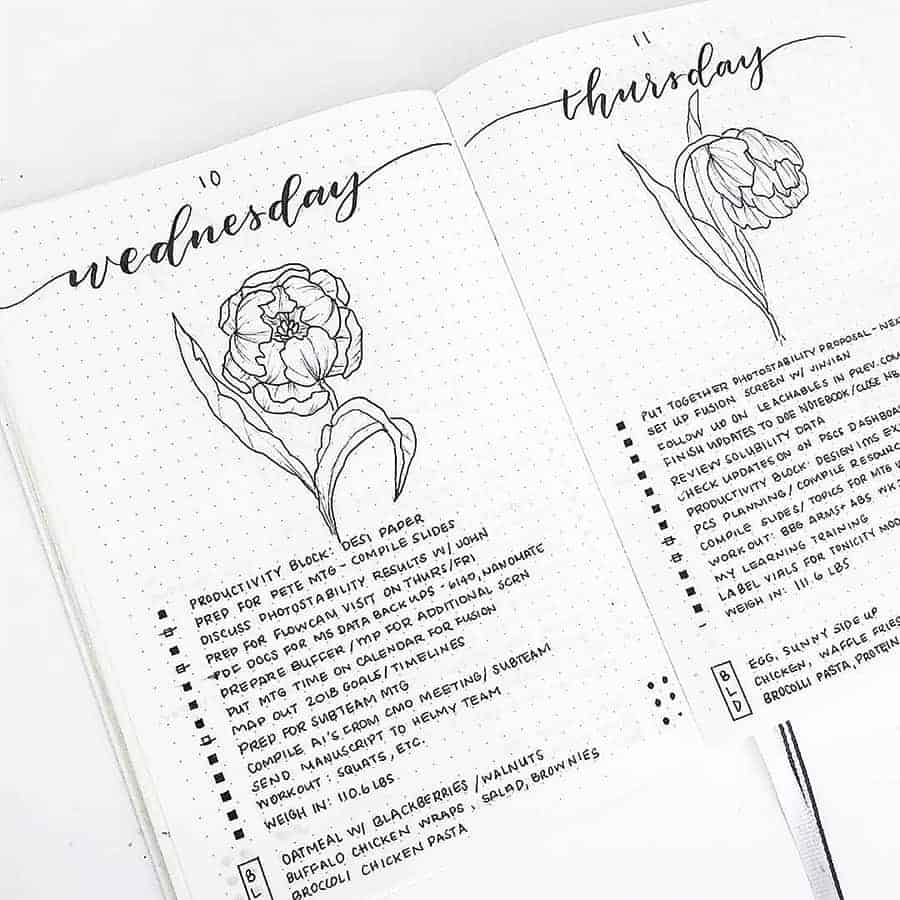
As you can see, a daily log can be so powerful. And I’m sure if you take a minute and think of something you need help with, you can come up with even more ideas.
Before you go right away and start adding all of these things to your daily log, let me share with you a few tips.
Bullet Journal Daily Log Tips
It’s easy to get excited and just go straight into planning.
And it’s not a bad thing; better start right away than spend months learning. I believe in learning by doing.
Nonetheless, here are some basic tips for you to consider:
- Don’t set it up in advance
Go as your days go, don’t try to pre-made your spreads in advance. The best way is to plan your next day the day before.
It might sound a bit time-consuming, but it is actually pretty easy and fast.
You never know how much space you’ll need, so it’s best to have the freedom to use as much space as you need for your day.
- Keep it simple
I know there are so many things you can add to your daily log, and there is so much space to be creative.
If you want to and have the time – go for it! But know that you don’t have to, and maybe, to begin with, you’d want to start with a simple setup.
Making it complicated might take away from the page’s usefulness, and you don’t want that. If Bullet Journaling starts feeling like a chore – you’re overcomplicating and doing something wrong.
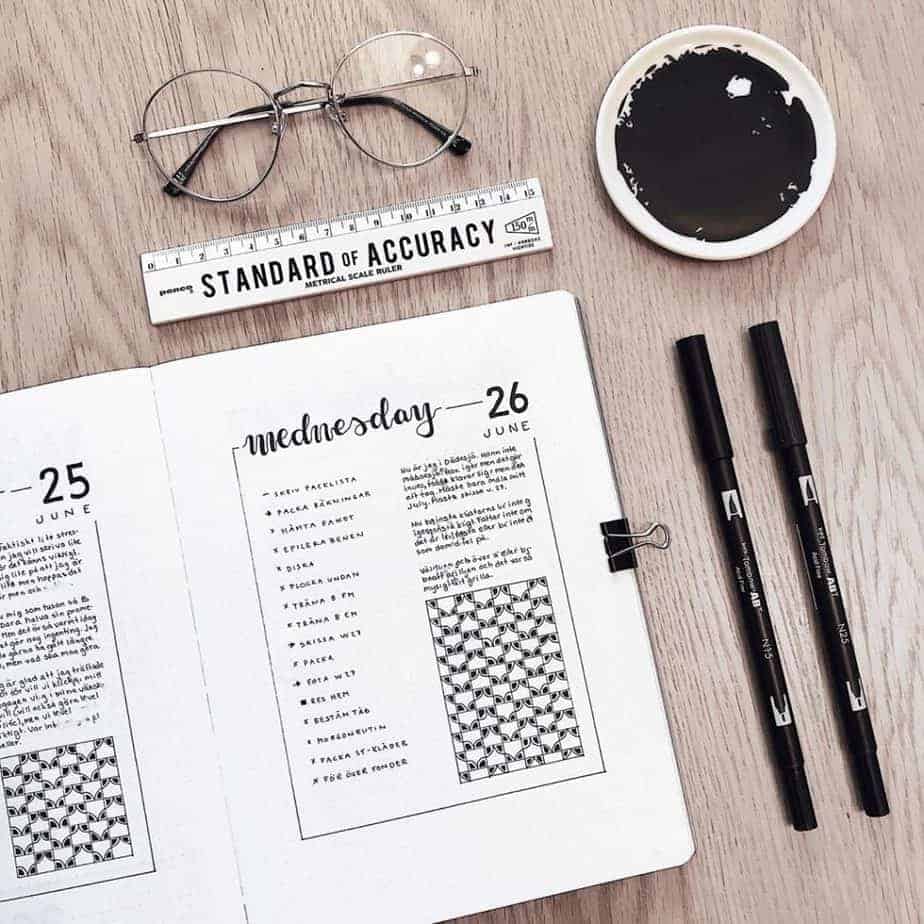
- Add what you need
The final tip is to think about what you actually need and what fits your lifestyle before adding all the things I mentioned above.
You probably don’t need all those things, so don’t try to use them either.
My tip would be to start from one or two and then see if it worked or not and if you feel like you need to add something else.
To begin with, just think of something you need help with within your life and start by adding those to your daily spread.
How To Stay Consistent With Using A Daily Log
Let’s be honest; planning is always a not-so-easy habit to establish, especially when it comes to using a daily log. But you will see the benefits only if you actually stick to it.
Consistency is key when it comes to using a daily log effectively. It can be easy to fall behind or forget to update your journal, but there are several tips and strategies you can use to stay on track.
One effective approach is to set a specific time of day for journaling and make it a part of your regular routine.
Whether you prefer to journal in the morning, afternoon, or evening, choosing a consistent time can help you establish a habit and make it easier to remember to update your log each day.
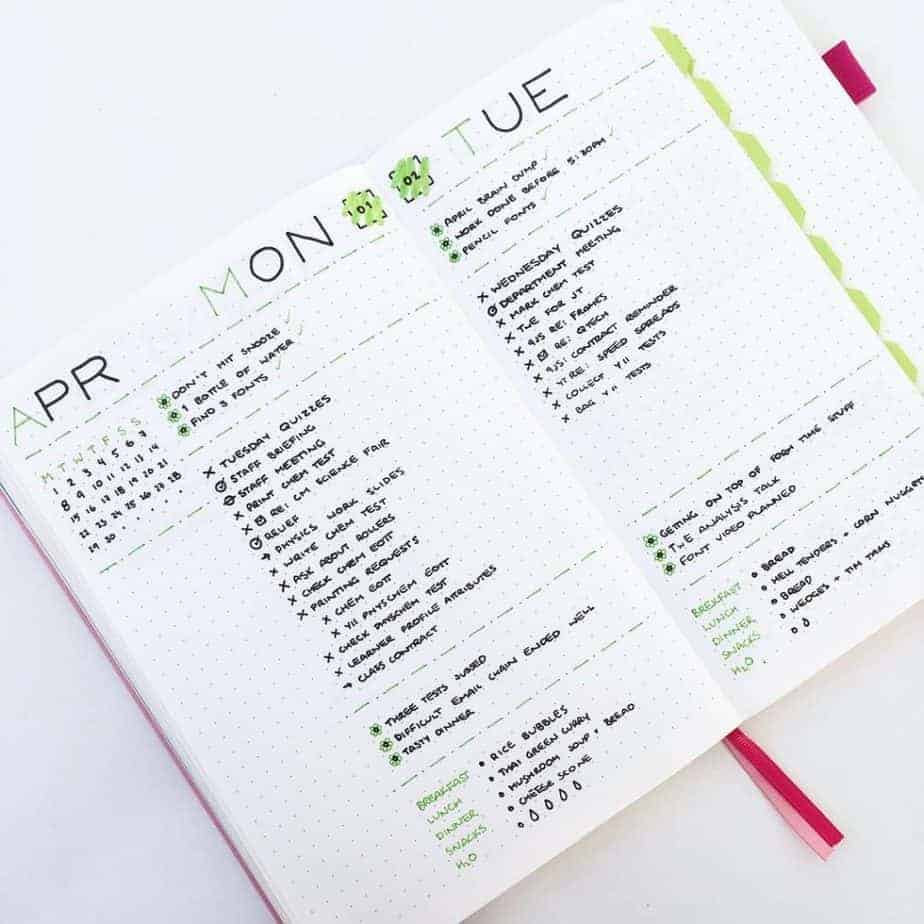
Another helpful strategy is to use reminders to prompt you to journal.
This could include setting the alarm on your phone, placing a sticky note on your computer or planner, or incorporating journaling into another part of your daily routine, such as after breakfast or before bed.
By making journaling a regular part of your routine and using reminders to reinforce the habit, you’ll be more likely to stick with it and reap the benefits of a consistent daily log.
Additionally, try to keep your journal in a location where you will see it frequently, and take the time to review your daily log regularly to stay motivated and focused on your goals.
Daily Log Vs. Weekly Spread
Everywhere online, you usually see Bullet Journal weekly logs rather than daily spreads. What’s the difference, and why should you try a daily log?
A weekly spread helps you see an overview of the whole week and plan accordingly, while a daily log only shows you what you have planned for the day.
The other big difference is that you have much more space for everything when using a daily log.
It’s really up to you to decide which format to use; you can use them all, switch it around according to your planning need or stick to one. It’s up to you; just listen to yourself and your life.
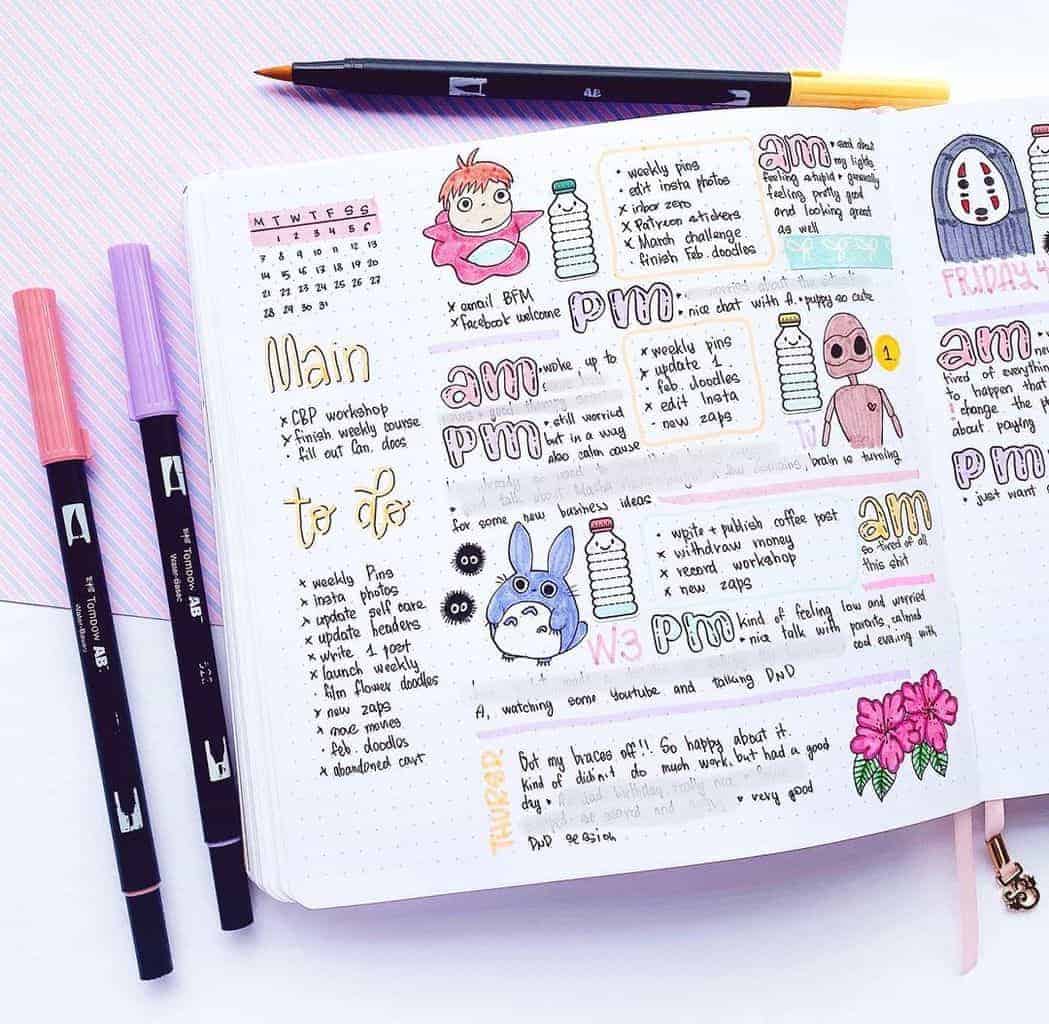
Daily spread is faster to create (you can do a header, and that’s it), allow more space, and help you be more concentrated.
When you have a weekly spread, you have a review of the entire week, so you always have the option to migrate your task to another day.
With a daily log, you’re more concentrated; you don’t have a visual representation of moving your tasks and completing them the next day instead, so I feel like you generally get t to be more focused and achieve more.
Stationery Recommendations
You know me, I can’t leave without giving you some stationery recommendations.
Of course, you can use anything you already have, but here are just a few of my favorite supplies:
- Sakura Pigma Micron – of course, a good fineliner is a staple for creating every Bullet Journal spread.
- Crayola Super Tips – I always recommend these pens for adding color; they are affordable and come in many beautiful colors.
- Tombow Fude Brush Pens – these brush pens with smaller tip will be perfect for adding beautiful lettering headers to your daily log.
- Journal Stencils – a great set of affordable stencils that has tons of little decorative and functional elements to help you with setting up your perfect daily log.
Free Daily Log Printable
Finally, of course, here is a little printable.
I made it very functional with a lot of extra details.
It’s also in A4 size, so you can print it and use it as a separate planning spread, maybe something on your fridge.
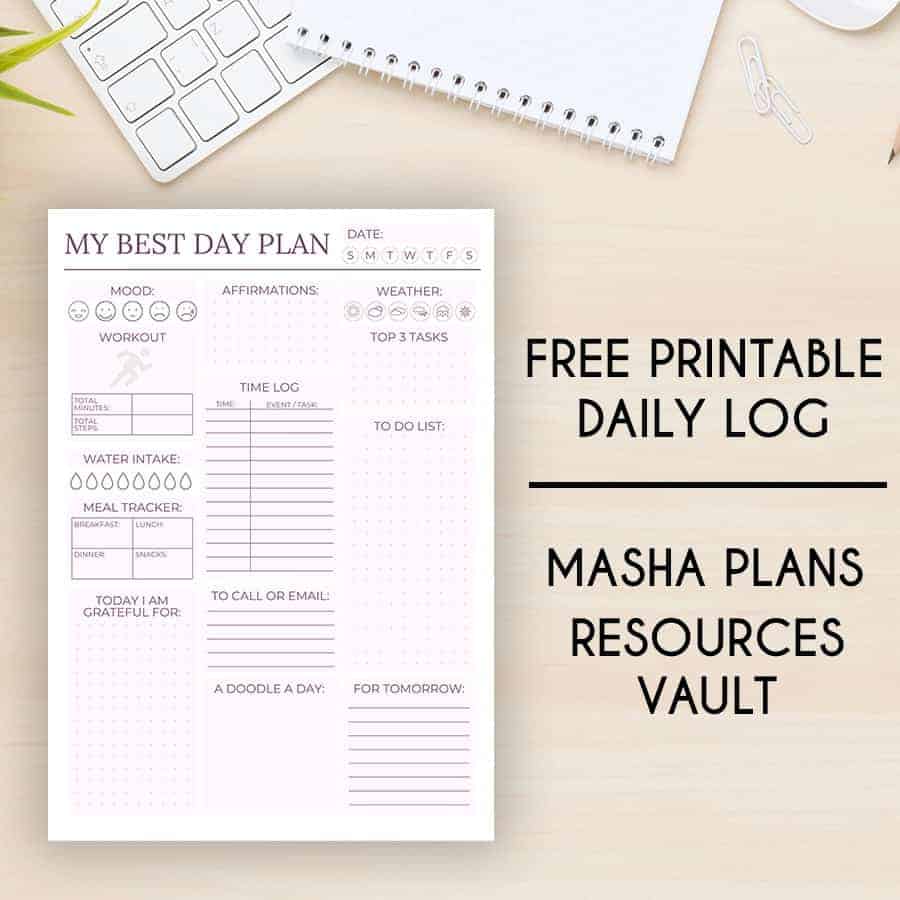
If you have never used any printables, check my post How To Use Printables In Your Bullet Journal.
And, of course, you can get this one in the “Weekly” section of our Resources Vault.
If you don’t have access yet, sign up in the form.
More Resources
There aren’t that many posts on a daily log, in particular on Masha Plans yet, but here are a few blog posts that will help you with your day-to-day planning.
- Weekly Spread VS Daily Log
- Bullet Journal Daily Log Inspirations
- Find Your Perfect Weekly Format
- Weekly Log Tips For Productivity
I hope this post was helpful; if you find it so, please share! If you enjoy my content and want to show your appreciation, please consider supporting me with a cup of coffee.
And remember: Keep Bullet Journaling, and Don’t Be A Blob!


